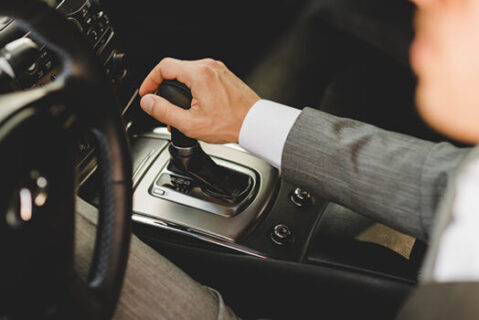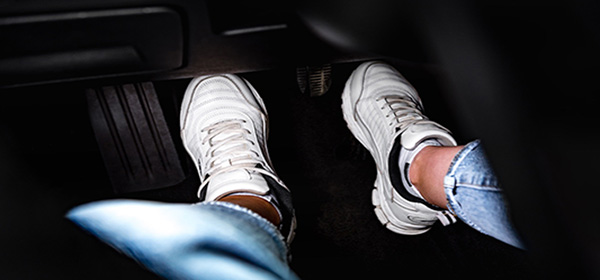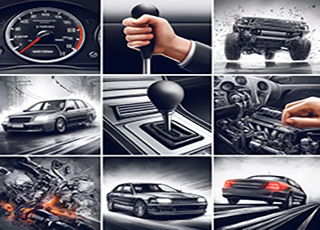Are you inadvertently putting stress on your vehicle with your driving habits? Explore these ten common behaviours, uncover the potential harm they can cause, and learn effective strategies to mitigate damage. Understanding how your actions impact your car’s health is essential for maintaining its longevity and performance. By identifying and addressing these habits, you can ensure smoother rides and prevent costly repairs down the road. Take the initiative to break these patterns and adopt safer driving practices that benefit both your car and your driving experience.
Effects of Engine Braking
Slowing down by downshifting gears, known as engine braking, can put significant strain on your drivetrain, particularly the transmission. When you rely on engine braking, the transmission faces increased wear and tear, potentially shortening its lifespan. To protect your vehicle, it’s advisable to opt for gentle use of the brake pedal instead, especially when decelerating at higher speeds. By avoiding excessive reliance on engine braking, you can help maintain the health and performance of your transmission over time.
Resting Your Hand on the Gearstick
Resting your hand on the gearstick while driving may seem harmless, but it can actually lead to damage to the transmission. The gearstick’s selector fork, responsible for facilitating gear shifts, can experience premature wear due to the constant pressure exerted by resting your hand on it. Many owner’s manuals explicitly warn against this habit, highlighting its potential to cause transmission issues. To safeguard your vehicle’s transmission, it’s essential to refrain from resting your hand on the gearstick while driving, ensuring smoother operation and longevity for your transmission system.
Accelerating in a High Gear
Accelerating in a high gear places undue strain on the engine, particularly when operating at low rpm. This can result in accelerated wear and tear, especially when the engine is cold and not yet at its optimal operating temperature. To mitigate potential damage, it’s important to downshift when necessary, allowing the engine to rev higher and operate more efficiently. By maintaining appropriate gear ratios during acceleration, you can help minimise wear on the engine and promote smoother driving performance overall.
Vehicle Overloading
When you exceed your car’s maximum load capacity, you’re not just adding extra weight; you’re placing stress on critical components such as brakes, suspension, and the drivetrain. Each vehicle has a specified load weight limit outlined in the owner’s manual, which you should adhere to diligently. By staying within this limit, you not only ensure the safety of your vehicle but also contribute to its longevity and overall performance. Additionally, travelling light has secondary benefits beyond just preventing strain on your car. It can significantly improve fuel economy, reducing the frequency of refuelling stops and lessening your environmental impact by reducing emissions. Therefore, before embarking on any journey, it’s wise to assess your cargo and prioritise essentials while leaving unnecessary items behind.
Shifting Gears Without Stopping
In automatic vehicles, shifting between drive and reverse without coming to a complete stop can wreak havoc on the transmission band. This essential component is designed to engage smoothly during gear changes but can suffer premature wear and tear when subjected to abrupt shifts. To safeguard your transmission and prolong its lifespan, it’s crucial to allow the brakes to bring the vehicle to a halt entirely before initiating any gear changes. By adhering to this practice, you not only minimise the risk of transmission damage but also promote smoother and more reliable vehicle operation over time, reducing the likelihood of costly repairs and maintenance down the road.
Avoiding Potholes and Speed Bumps
Potholes and speed bumps pose significant risks to your vehicle’s overall health, potentially causing a range of issues from wheel damage and tire lumps to misalignments. The impact of driving over these hazards can result in buckled wheels, cracked alloys, and even upset wheel balancing, leading to compromised safety and performance. While some potholes may be difficult to spot, particularly in adverse weather conditions or at night, it’s essential to remain vigilant and steer clear of them whenever possible. Similarly, approaching speed bumps with caution can help mitigate potential damage to your vehicle’s underside, including the exhaust system. By adopting a proactive approach to road hazards, you can minimise the risk of costly repairs and ensure a smoother and safer driving experience for yourself and your passengers.
Responding to Dashboard Warning Lights
Dashboard warning lights serve as crucial indicators of potential issues with your vehicle’s systems. Ignoring these warnings, especially those related to engine, braking, or steering systems, can exacerbate problems and lead to costly repairs. It’s essential to familiarise yourself with the meanings of these warning lights by consulting your owner’s manual. Addressing serious issues promptly can prevent breakdowns and ensure your safety on the road. Ignoring warning lights may result in further damage and compromise the overall performance of your vehicle, so it’s wise to take them seriously and seek professional assistance when necessary.
Revving the Engine When Cold
Refrain from revving the engine when it’s cold, as this can cause premature wear and tear on critical components. Allowing the engine to warm up gradually allows the oil to circulate properly, ensuring optimal lubrication and performance. Excessive revving when the engine is cold can lead to increased friction and strain on internal parts, potentially resulting in long-term damage. By practising patience and allowing the engine to reach its optimal operating temperature naturally, you can prolong its lifespan and avoid unnecessary repairs.
Riding the Clutch

Riding the clutch, whether during gear changes or hill starts, can cause excessive wear and tear on this vital component. To minimise strain on the clutch and maximise its longevity, ensure your foot is off the pedal after shifting gears. Additionally, when performing hill starts, use the handbrake to hold the car in place until you’re ready to move, rather than relying solely on the clutch. This proactive approach to clutch management can help prevent premature wear and potential clutch failure, ultimately saving you time and money on repairs.
Late Braking
Consistently braking late not only wears down brake pads and discs faster but also compromises your safety on the road. By adopting a proactive driving approach and anticipating road conditions, you can minimise the need for sudden braking manoeuvres. This not only reduces strain on your braking system but also improves fuel efficiency and overall vehicle performance. By maintaining a safe following distance and keeping an eye on the road ahead, you can avoid unnecessary wear and tear on your brakes while promoting a smoother and more enjoyable driving experience.
By breaking these habits, you can protect your car from unnecessary damage and enjoy smoother, more efficient driving experiences. And remember to invest in breakdown cover for added peace of mind on the road!


